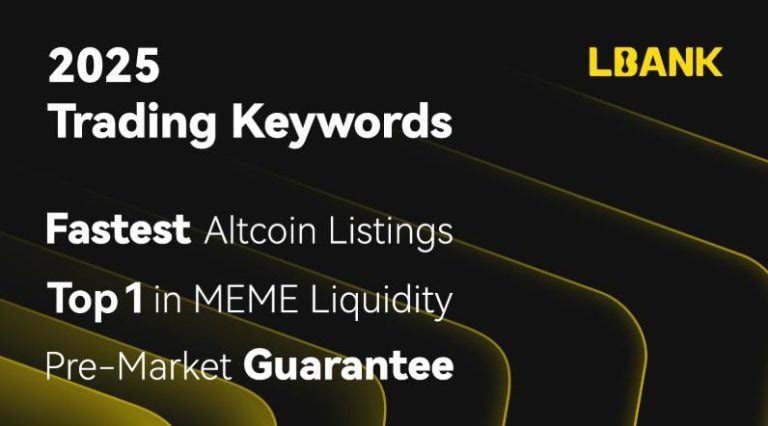
Nansen CEO Alex Svanevik sat down with Cointelegraph for an exclusive interview during Token2049.
Public blockchains can be accessed and read by anyone but creating meaningful insights from this data is no mean feat. Millions of transactions are recorded across a variety of chains and layer-2 protocols, creating petabytes of data daily.
Services like Google transformed the early internet, accomplishing a significant engineering task by structuring and curating millions of websites to serve simple user queries. A handful of blockchain analytics platforms are looking to do the same, with Nansen distinguishing itself by processing on-chain data into a growing database of wallet labels.
Cointelegraph visited the Singapore office of the growing firm during Token2049 for a one-on-one with co-founder and CEO Alex Svanevik. Occupying a dedicated space in a co-working environment, the office was a buzz with employees that were in town from the company’s hubs in Lisbon, Miami, London and Bangkok.
Svanevik’s background is rooted in artificial intelligence. Graduating from the University of Edinburgh in 2010, the Norwegian’s dissertation focused on building models based on how children learn mathematics. His first foray into the world of work involved the establishment of a business-focused AI consultancy before moving into management consulting.

A stint as a data scientist for a media company preceded his eventual move into the world of cryptocurrencies, as Svanevik was introduced to Ethereum in 2017. His first job for a cryptocurrency firm bankrolled by a $15 million initial coin offering lasted about a year, as the company became one of many to boom and bust post-2017.
Svanevik, Lars Krogvig and Evgeny Medvedev then teamed up to create Nansen AI, eyeing a gap in the market for an on-chain analytics tool aimed at investors:
“On the one hand, you had the free tools that all crypto investors had access to like Coinmarketcap and Etherscan and then on the other extreme, you had very expensive tools that were used exclusively by enterprises like Chainalysis.”
Nansen was formed in late 2019 to provide high-caliber analytics tools to investors delivering blockchain data and insights in real-time. Svanevik admitted that the platform originally attracted sophisticated cryptocurrency traders with large holdings but has since evolved to have a 50/50 split of retail and institutional users:
“We started with what you might call the ‘DeGens’ right before DeFi summer. A lot of them were using Nansen to navigate DeFi summer, which DeFi pools should you allocate your capital to, which tokens should you buy and so on.”
The ongoing cryptocurrency bear market, which is mirrored by traditional stock markets, leads Svanevik to believe that their sector will trend toward greater institutional use over the next two years. Individual investors may take a break from crypto and cut back on analytics services, but continued institutional investment efforts will demand data-driven insights:
“There’s a lot of companies, funds, operators, blockchain and crypto projects where the businesses that raise money are doing fine from a financial perspective. They’re not just going to wind down their operations because crypto tanks 70% you know, they still need to have really high quality analytics and information.”
Labeling wallets
Nansen has slowly garnered a reputation for its wallet labeling efforts across the cryptocurrency ecosystem. Again, this hardware and labor-intensive endeavor is a testament to the platform’s joint AI and human efforts.
Svanevik estimated that Nansen scans nearly a petabyte of data daily from the variety of chains it keeps tabs on. This also accounts for nearly 20% of the company’s running costs, with Svanevik describing Nansen as “Google Cloud maximalists,” with the computing service their infrastructure platform of choice since inception.
Recent: What remains in the NFT market now that the dust has settled?
This speaks to the fact that despite public blockchains being available to all and sundry, there is inherent value in bringing order to data and gleaning valuable information from it. This is where Svanevik drew parallels to the platform and what Google did with the wider internet:
“If you think about Google as a search engine, every website is public, right? But this is a huge engineering task to actually structure, curate and serve up the relevant websites for your query. I think Nansen is somewhat analogous to that. But, we also have proprietary data that we enrich the public data with, which is kind of one of the things we’re known for.”
Nansen has over 130 million addresses that it has labeled with additional information that is directly accessible from blockchains. This allows the average user to find out which addresses are held by notable entities like Binance, Alameda, Celsius and Hodlnaut, as Svanevik highlighted.
When asked if the labeling feature was a focal point from the outset of Nansen’s existence, Svanevik noted that the first iteration of the platform was a database in which a user could look up addresses and get wallet labels:
“We realized that that alone is not very helpful. You need to combine it with the transactional data and you need to have some kind of user interface, something that’s valuable.”
The evolution of Nansen’s platform was a result of combining “man and machine” into processes and an architecture to compile the information. A network effect led to compounding returns, as identified wallets that have been labeled often lead to the identification of other wallets interacting with them. Ninety-nine percent of this work is still done by AI, while Nansen’s research team plays a role in connecting the dots for the remaining 1%.
The labeling of wallets and individuals has also been a point of much debate in the wider cryptocurrency ecosystem. Privacy is an inherent value touted by blockchain technology, but the transparency of public blockchains means that analytics tools can now identify who is in control of specific assets and wallets.
Svanevik said that Nansen is mainly focused on labeling projects and corporations rather than individuals, save for those that are deemed to be notable public figures:
“We don’t really put a lot of effort into tagging individuals. If we do, it’s typically because they’re noteworthy. They’re founders of projects, imagine, you know, Do Kwon or Vitalik, these are notable public figures. And we think it’s in the public interest to have them labeled.”
The Nansen co-founder also believes that the labeling of wallets belonging to major exchanges, institutions and individuals has led to people becoming more privacy-aware. Curating, compiling and serving up information in a convenient way is the goal, which in itself raises some ideological considerations:
“There is a fundamental dilemma with transparency and privacy blockchain, and something that people should think about and be mindful of.”
“Bad labels” vs “Good labels”
Nansen is one of a handful of well-known analytics firms that is bringing sense and order to blockchain data. Distinguishing the product offering of these similar firms, Svanevik highlighted platforms like Chainalysis and its focus on tracking illicit use of cryptocurrency as a key difference from what Nansen focuses on:
“So, Chainalysis tends to focus on illicit use of funds. What you might consider ‘bad labels.’ This is sanctioned, this is a scam, and so on. Whereas Nansen tends to focus on ‘good labels.’ This is a smart money address that you might want to follow because they made good investment decisions in the past, that this is a fund you might want to know about and so on.”
Given that 99% of cryptocurrency transactions are above board, Nansen chose to focus on crypto-native investors and operators while market participants like Chainalysis, Elliptic and PRM Labs cater more toward public institutions and government agencies.
Nevertheless, Nansen has played its part in analyzing major cryptocurrency events, including its role in tracing token movements linked to major firms during the infamous Terra crash in April 2022:
“Luna is one example where we had the labeled Terra data and we had Ethereum data to complement it because of the wrapping of Luna and the curve pools which actually triggered the collapse of Terra USD. But, also things like Hodlnaut and their involvement in it and our ability to look into that.”
Nansen’s tools and its recently launched research department helped journalists at Tech in Asia to piece together questionable practices by Hodlnaut, one of a number of cryptocurrency lending firms that shuttered in the wake of the Terra collapse in 2022.
Settled in Singapore
Cointelegraph’s in-depth conversation with Svanevik concluded with his take on Singapore as a cryptocurrency hub of Asia. Token2049 attracted thousands of attendees and certainly left the impression that the island nation, with its towering skyscrapers and futuristic buildings, is a center for the ecosystem.
Svanevik believes Singapore is in a unique position to be one of the world’s crypto hubs for a few different reasons. First and foremost, the country is “a place where finance meets tech,” which is in contrast to its closest Asian contender, Hong Kong, which Svanevik highlights as more finance-oriented.
Recent: Music NFTs a powerful tool to transform an audience into a community
Regulators in Singapore are also aware of this fact and having participated as a panelist at a recent Monetary Authority of Singapore event, Svanevik highlighted tight controls having both positive and negative effects:
“In the time I’ve lived here, they have become more strict. They are not with open arms, inviting in everyone who does anything with crypto. So it is quite difficult to get a license here. There’s a long queue, they’ve received quite a fair amount of criticism for that.”
While it’s a tough environment to set up shop, the Nansen CEO believes it puts the country in a good position to be a respected jurisdiction to operate out of.

